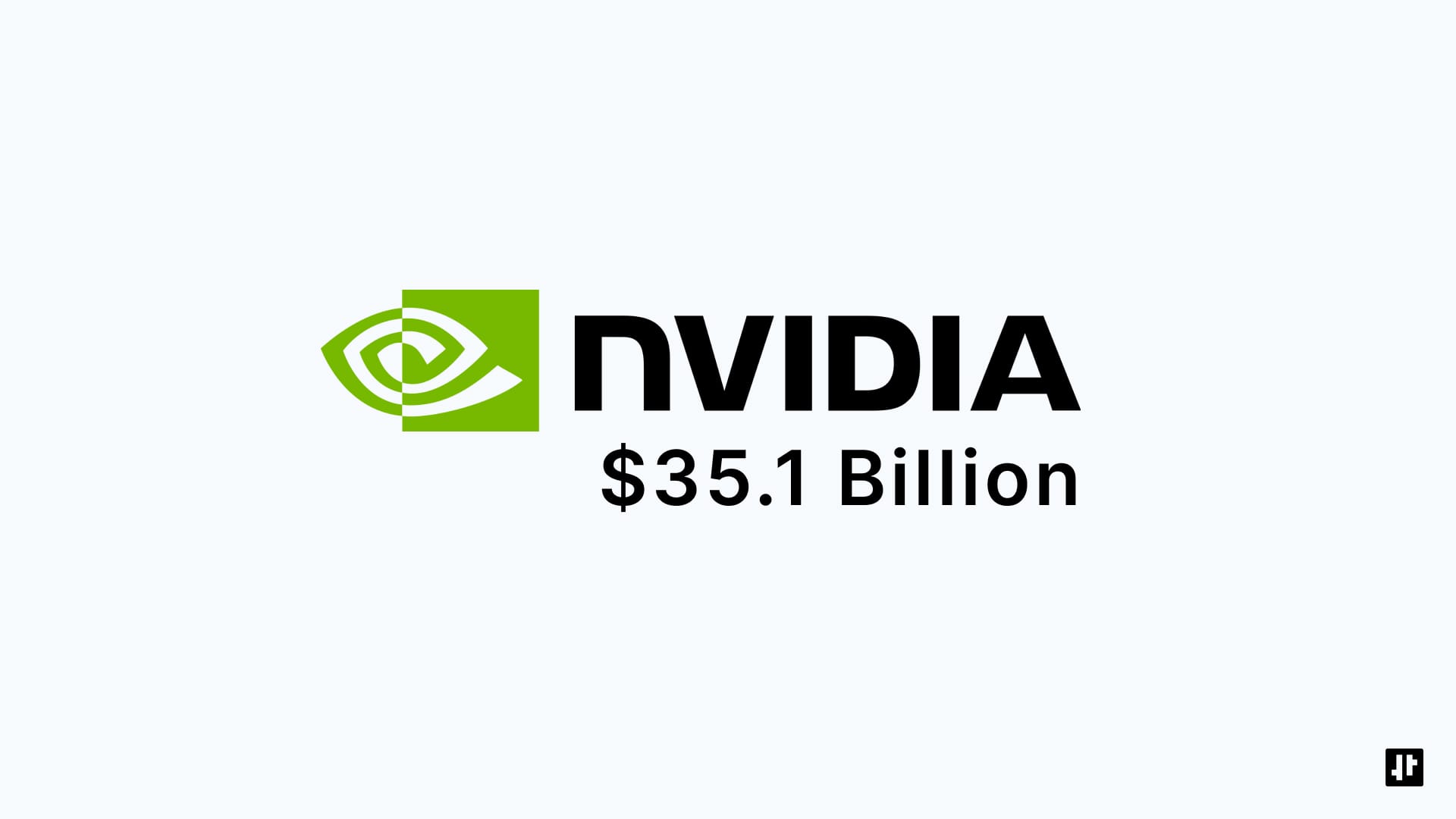NVIDIA's Revenue Surge Highlights the Growing Impact of AI
AI has fueled NVIDIA's financial growth, positioning it as a semiconductor leader, with its GPUs driving the booming AI industry.

Originally established to cater to gaming, NVIDIA Corporation has seen explosive financial growth in recent quarters, fueled almost entirely by surging demand for its GPUs in artificial intelligence (AI) applications.
Financial Performance
In its most recent earnings report, NVIDIA announced a 94% year-over-year increase in revenue, reaching $35.1 billion for the third quarter of fiscal 2024. The company also reported a 109% rise in net income, totaling $19.3 billion. These results exceeded Wall Street’s expectations, with projections of $33.2 billion in revenue and $17.4 billion in net income.
Notably, NVIDIA’s data center business, which includes sales of GPUs used in AI, grew by 112% year-over-year to $30.8 billion. This sector has become the primary revenue driver as businesses adopt generative AI and large language models.
AI in NVIDIA’s Growth
The recent surge in NVIDIA’s financial performance is deeply tied to AI’s rapid adoption across industries. Key factors include:
- AI Model Training and Inference:
NVIDIA’s GPUs are critical for training and deploying advanced AI systems, including large language models like OpenAI’s GPT series and image-generation tools. These systems require immense computational power, and NVIDIA’s hardware, particularly its A100 and H100 GPUs, has become the industry standard. - Data Center Dominance:
NVIDIA’s GPUs are powering data centers worldwide, enabling cloud providers and enterprises to scale AI workloads. Companies like Microsoft, Google, and Amazon are among its largest customers, using NVIDIA chips to fuel AI research and development. - Cross-Industry Adoption:
AI is no longer confined to tech giants. From healthcare diagnostics to autonomous vehicles and financial modeling, businesses in diverse sectors are investing in AI, further boosting demand for NVIDIA’s hardware.
Technological Innovation
Central to NVIDIA’s continued dominance is its ongoing investment in cutting-edge hardware. The upcoming Blackwell architecture, set to launch in 2025, promises transformative improvements in AI processing:
- Performance Boosts: The Blackwell GPUs are projected to outperform NVIDIA’s current flagship, the H100, by 7 to 30 times in specific AI tasks.
- Market Demand: Anticipation for Blackwell is already fueling pre-orders, signaling another wave of revenue growth once the product becomes available.
This focus on innovation ensures NVIDIA remains indispensable to the AI ecosystem as workloads become more complex.
Competitive Landscape
Despite its dominance, NVIDIA faces growing competition. Rivals like AMD and Intel are stepping up their efforts to capture a share of the AI hardware market:
- AMD: The company is marketing its MI300 chips as a direct competitor to NVIDIA’s GPUs, highlighting improved power efficiency and cost-effectiveness.
- Intel: Leveraging its deep roots in data centers, Intel is developing AI-optimized processors to challenge NVIDIA’s dominance.
- Google’s TPU and AWS Inferentia: Cloud providers are also developing proprietary AI accelerators to reduce dependence on NVIDIA.
However, NVIDIA’s early entry and continued innovation in AI hardware give it a significant edge in maintaining its market leadership.
Market Challenges
While NVIDIA’s outlook is overwhelmingly positive, it must navigate several challenges:
- Supply Chain Constraints:
The demand for NVIDIA’s GPUs often exceeds supply, leading to delays in meeting customer needs. Scaling production, particularly for advanced chips like the H100 and future Blackwell models, remains a logistical challenge. - Regulatory Scrutiny:
With its dominance in the AI hardware market, NVIDIA has attracted the attention of regulators worldwide. Concerns about potential monopolistic behavior could lead to increased scrutiny or restrictions on its operations. - Hardware Limitations:
AI workloads are pushing the boundaries of existing hardware, with bottlenecks emerging in areas like memory bandwidth and heat dissipation. NVIDIA must address these challenges to maintain its technological edge.
Conclusion
AI has pushed NVIDIA to the top of the semiconductor industry, making it a standout leader in a market increasingly shaped by artificial intelligence. By tailoring its hardware innovations to meet the demands of modern AI workloads, NVIDIA hasn't just advanced technology but has also positioned itself as a key driver of the AI revolution.
Despite ongoing challenges like competition and supply chain issues, the company's dominance is strengthened by its ability to satisfy the evolving needs of AI-driven industries. Competitors might find opportunities in offering cost-effective solutions or specialized hardware, but NVIDIA's early lead, vast ecosystem, and integration into crucial AI applications leave it well-placed to shape the future of the semiconductor market.
As AI adoption continues to surge, NVIDIA's GPUs remain central to this transformation, establishing the company as a trendsetter and pivotal figure in the AI-driven economy.